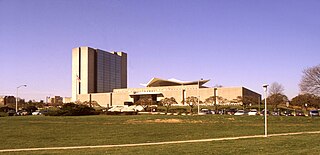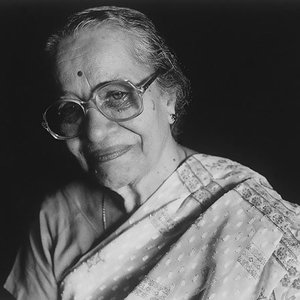
A citation is a reference to a source. More precisely, a citation is an abbreviated alphanumeric expression embedded in the body of an intellectual work that denotes an entry in the bibliographic references section of the work for the purpose of acknowledging the relevance of the works of others to the topic of discussion at the spot where the citation appears.
MEDLINE is a bibliographic database of life sciences and biomedical information. It includes bibliographic information for articles from academic journals covering medicine, nursing, pharmacy, dentistry, veterinary medicine, and health care. MEDLINE also covers much of the literature in biology and biochemistry, as well as fields such as molecular evolution.

The United States National Library of Medicine (NLM), operated by the United States federal government, is the world's largest medical library.
PubMed is a free database including primarily the MEDLINE database of references and abstracts on life sciences and biomedical topics. The United States National Library of Medicine (NLM) at the National Institutes of Health maintains the database as part of the Entrez system of information retrieval.
PubMed Central (PMC) is a free digital repository that archives open access full-text scholarly articles that have been published in biomedical and life sciences journals. As one of the major research databases developed by the National Center for Biotechnology Information (NCBI), PubMed Central is more than a document repository. Submissions to PMC are indexed and formatted for enhanced metadata, medical ontology, and unique identifiers which enrich the XML structured data for each article. Content within PMC can be linked to other NCBI databases and accessed via Entrez search and retrieval systems, further enhancing the public's ability to discover, read and build upon its biomedical knowledge.
The Vancouver system, also known as Vancouver reference style or the author–number system, is a citation style that uses numbers within the text that refer to numbered entries in the reference list. It is popular in the physical sciences and is one of two referencing systems normally used in medicine, the other being the author–date, or "Harvard", system. Vancouver style is used by MEDLINE and PubMed.
Index Medicus (IM) is a curated subset of MEDLINE, which is a bibliographic database of life science and biomedical science information, principally scientific journal articles. From 1879 to 2004, Index Medicus was a comprehensive bibliographic index of such articles in the form of a print index or its onscreen equivalent. Medical history experts have said of Index Medicus that it is “America's greatest contribution to medical knowledge.”
Europe PubMed Central is an open-access repository that contains millions of biomedical research works. It was known as UK PubMed Central until 1 November 2012.
The Journal of the Royal Society of Medicine is a peer-reviewed medical journal. It is the flagship journal of the Royal Society of Medicine with full editorial independence. Its continuous publication history dates back to 1809. Since July 2005 the editor-in-chief is Kamran Abbasi, who succeeded Robin Fox who was editor for almost 10 years.

The American Journal of Bioethics is a monthly peer-reviewed academic journal published by Taylor & Francis, covering all aspects of bioethics. It publishes target articles, open peer commentaries, editorials, book reviews, and case studies and commentaries in clinical care and research ethics. The journal also publishes special issues that address timely ethical challenges. The editor-in-chief is David Magnus, who was also one of the journals founders.
Bioethics is a monthly peer-reviewed academic journal published by Wiley-Blackwell in association with the International Association of Bioethics. The editors-in-chief are Ruth Chadwick and Udo Schüklenk. In 2011 Bioethics celebrated 25 years of publication with a conference and a special issue of the journal.
Today in China, there are more than 8,000 academic journals, of which more than 4,600 can be considered scientific. About 1,400 cover health science. In 2022, it was reported that China has become one of the top countries in the world in both scientific research output, and also for highly cited academic papers.

OMICS Publishing Group is a predatory publisher of open access academic journals. It started publishing its first journal in 2008. By 2015, it claimed over 700 journals, although about half of them were defunct. Its subsidiaries and brands include Allied Academies, Conference Series LLC LTD, EuroSciCon LTD, Hilaris Publishing, iMedPub LTD, International Online Medical Council (IOMC), Longdom Publishing SL, Meetings International, Prime Scholars, Pulsus Group, Research & Reviews, SciTechnol, Trade Science Inc, Life Science Events, Walsh Medical Media, and IT Medical Team.

Kamal Jayasing Ranadive was an Indian biomedical researcher known for her research on the links between cancers and viruses. She was a founding member of the Indian Women Scientists' Association (IWSA).
Sir Charles Pardey Lukis was the inaugural editor of the Indian Journal of Medical Research and served as the Director-General of the Indian Medical Service (1910–1917). Pardey was also a strong supporter of the establishment of the Calcutta School of Tropical Medicine, though he did not live to see it open in 1921. He received his medical training at St. Bartholomew's Hospital, becoming a Fellow of the Royal College of Surgeons in 1890. The same year, he entered the Bengal Army and served and worked in India for the remainder of his career, though he was awarded his MD from the University of London in 1904. He was appointed as a professor of medicine in Calcutta in 1905 and became honorary surgeon to the Viceroy of India the same year. He was made a Commander of the Order of the Star of India in 1910, was knighted in 1911, and became honorary surgeon to the king in 1913. His appointment as director-general of the Indian Medical Service was at the rank of surgeon-general, and he was promoted to lieutenant general in 1916. Theodore Lukis, his son, was expected to follow in his father's footsteps and qualified as a medical doctor but was killed during the First World War. Lukis was extremely bitter about his loss, writing that "his has been a wasted life and I can find no justification, for a medical man, who gives up his profession of healing, in order to endeavour to kill his fellow creatures, even though they be enemies". A book co-written by Lukis, Tropical Hygiene for Residents in Tropical and Sub-Tropical Climates, was re-issued in 2010. Lukis also wrote a handbook on midwifery.
The Journal of the Indian Academy of Applied Psychology is a biannual peer-reviewed academic journal published by the Indian Academy of Applied Psychology, for which it is the official journal. The editor-in-chief is Updesh Kumar.
Rakesh Aggarwal is an Indian gastroenterologist, who is currently the Director of Jawaharlal Institute of Postgraduate Medical Education & Research (JIPMER), Puducherry, India. He was previously a Professor of Gastroenterology at the Sanjay Gandhi Postgraduate Institute of Medical Sciences. Known for his studies on Gastrointestinal diseases, Liver diseases, and Viral Hepatitis, Aggarwal is an elected fellow of all the three major Indian science academies, namely National Academy of Sciences, India, the Indian Academy of Sciences and the Indian National Science Academy, and of the National Academy of Medical Sciences. The Department of Biotechnology of the Government of India awarded him the National Bioscience Award for Career Development, one of the highest Indian science awards, for his contributions to biosciences in 2002.

The idea and practise of providing free online access to journal articles began at least a decade before the term "open access" was formally coined. Computer scientists had been self-archiving in anonymous ftp archives since the 1970s and physicists had been self-archiving in arXiv since the 1990s. The Subversive Proposal to generalize the practice was posted in 1994.

Raju Vaishya is an Indian researcher with contributions in the field of orthopaedics. He is former President and founder member of Indian Cartilage Society (2018–19) and Founder President of Arthritis Care Foundation. He has established a center for Autologous Chondrocyte Implantation (ACI) at Indraprastha Apollo Hospitals, New Delhi, India. Instrumental (PSI) in starting the first cartilage club in Delhi, to enhance the awareness about the cartilage science and regenerative treatments used in Orthopaedics. He has the credit of doing the first preplan patient specific instruments (PSI) total knee arthroplasty, in Northern India in May 2013.

National Institute for Research in Bacterial Infections or NIRBI previously known as National Institute of Cholera and Enteric Diseases is an Indian medical institute that conducts research and develops prevention and treatment and control strategies related to enteric diseases and HIV/AIDS. The headquarter of NICED is located at Kolkata, West Bengal. NIRBI is affiliated to and financed by Indian Council of Medical Research.








